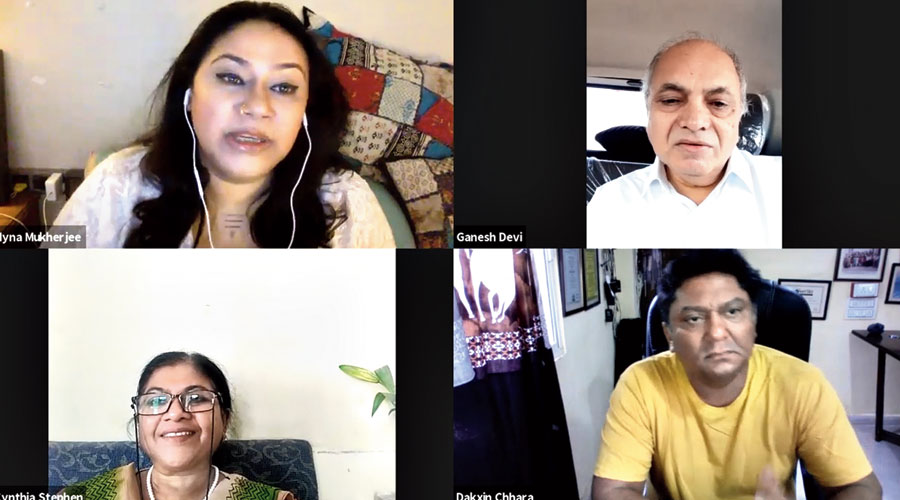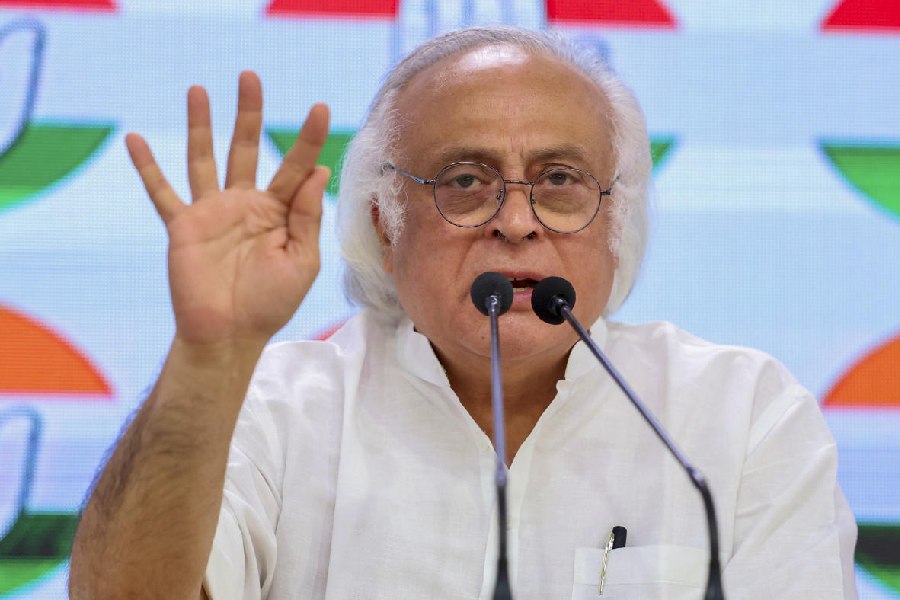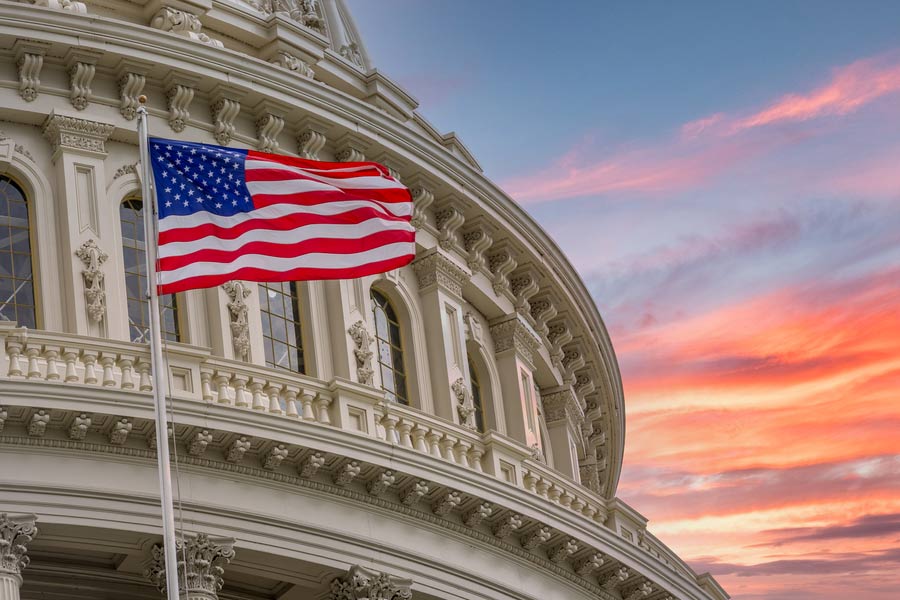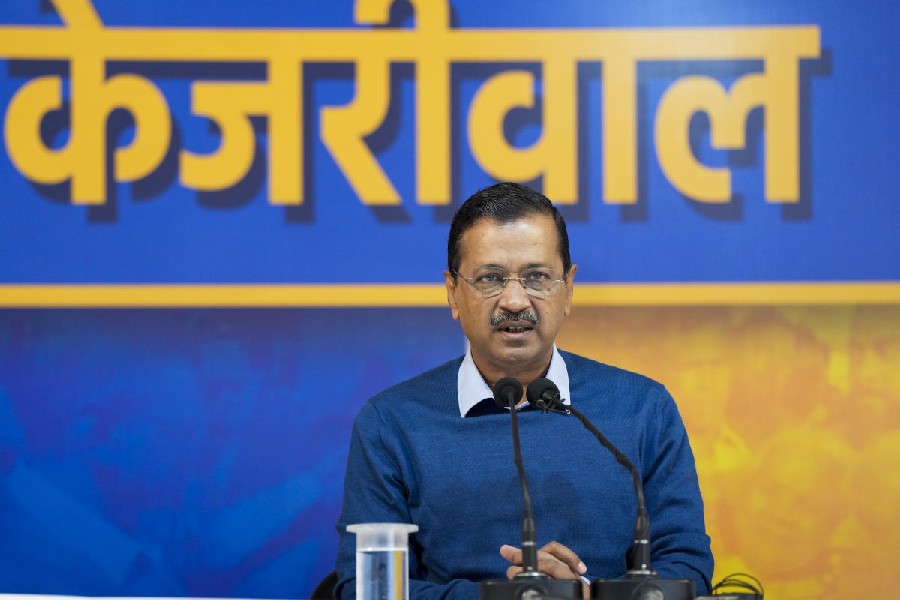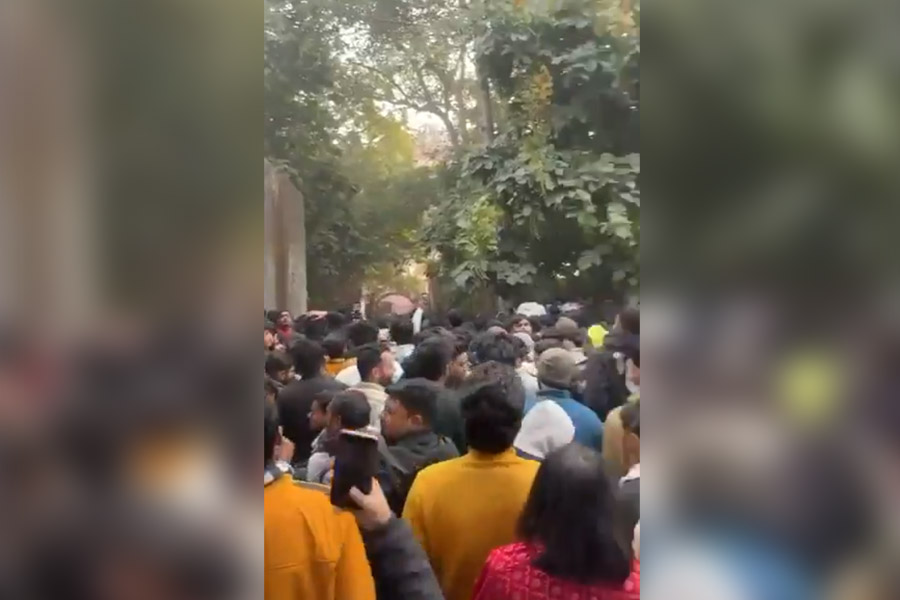The youth and women at the helm of the protests against the citizenship thrust last year brought in a rare phenomenon in India’s political space, something that was last seen a century ago, a literary scholar and cultural activist said at a virtual session on Sunday.
“What is of utmost significance is the emergence of youth and women at the forefront of an important national debate. It is equally significant that they are espousing values of the Constitution and humanism and articulating with an unprecedented precision a politics that is non-sectarian, non-divisive and non-abrasive,” said Ganesh Devy, 70, who writes in Marathi, Gujarati and English.
“Such a fundamental political change had occurred once in the times of freedom struggle of Mahatma Gandhi, precisely in the third decade of the 20th century. Probably a century later, in the third decade of the 21st century, this epistemic shift is showing signs of coming into being,” Devy said at one of the sessions of the third edition of Vasudhaiva Kutumbakam, partnered by The Telegraph, hosted by the Kolkata Centre for Creativity.
Devy, one of the first to return a Sahitya Akademi Award — he won the prize in 1992 for his book After Amnesia — to protest the attack on writers in 2015, was the plenary speaker of a session titled “Protest against discriminatory oppression”.
Shwetal A Patel, the co-curator of the two-day programme that ended on Sunday, set the context at the start of the session.
“In the background of the protests against the discriminatory CAA and NRC laws in India, the coronavirus broke out. The movement was unique in its expression as it took various artistic actions to convey its political agenda…. Likewise, the Black Lives Matter movement in the US also used different artistic approaches, including the use of performance, music and social media to promote its viewpoint.”
The session, Patel said, would re-stoke the age-old debate about the “purpose and efficacy of art in achieving political aims” and delve into issues like the “significance of the arts in bringing expression to activism”.
Devy gave a detailed critique of the Citizenship Amendment Act, the National Register of Citizens and National Population Register before hailing the protests against the troika.
The idea of politics as a “divide and rouse game” has dominated the discourse of the country for the past several decades, he said.
“The non-violent and spontaneous anti-CAA protests… the emergent tone and the uniqueness of the protests do indicate that we are beginning to enter a new political era. Not the one proposed by the forces of Hindutva but the one that is heading towards a greater humanism and empathy…. Protests against discriminatory oppression is not new in India. But at this juncture, it is acquiring new use, befitting the needs, urges and aspirations of a new century’s new decade,” said Devy.
Art curator Myna Mukherjee, who moderated the session, asked Devy how important he thought the “cultural part of activism” was.
Devy equated culture with an “idiom” in a sentence.
“In communication, we use sentences with subject, object and verb but we also use idioms. Similarly, in social practice, action is like sentences but culture is like an idiom. It has an ability to express a lot more for its own time, as well as beyond its time, for its own space, as well as beyond its space. Therefore, culture is far more poignant than communication through statements, slogans, political marches, demonstrations, dharnas and so on. A Charlie Chaplin is as effective in the times of Hitler as in the times of Trump,” he said.
Cynthia Stephens, Dalit activist and writer, Andraz Szanto, a New York-based museums expert and Dakxin Chhara, artistic director of Budhan Theatre, were speakers at the session.
Budhan Theatre, named after a man from the denotified Sabar tribe in Bengal who was killed in police custody in 1994, was established in 1998 by Mahasweta Devi and Devy.
The group comprises members of Ahmedabad’s Chhara community, one of several denotified tribes in India — groups who were formally classified as criminal tribes during the British rule in the late 19th century. Members of these communities, many of them nomadic, were considered criminals by birth. It was not before 1952 that these tribes were delisted as criminal. But till date, they are subjected to discrimination by the state and society.
On Sunday, Dakxin shared some “success stories of art, protest and activism”. The stage of one of them was Maninagar in Ahmedabad, Narendra Modi’s former Assembly seat.
A lot of tribal families living in Maninagar had their hutments razed by the civic body multiple times, said Dakxin. His theatre group tried to mediate with the civic body that called the tribal families “encroachers”. The matter eventually went to the high court which ruled in favour of the tribals.
“The civic body challenged us in the Supreme Court. We did not have money. But we came up with a play called Bulldozer. It was 2007-2008…. In 2012, we won the case in the Supreme Court also and all this happened because of theatre…. In 2017, the Gujarat government implemented the order. After a long legal wait, because of theatre, because of activism, 112 families live right under the nose of Modi. They have been allotted houses,” he said.

